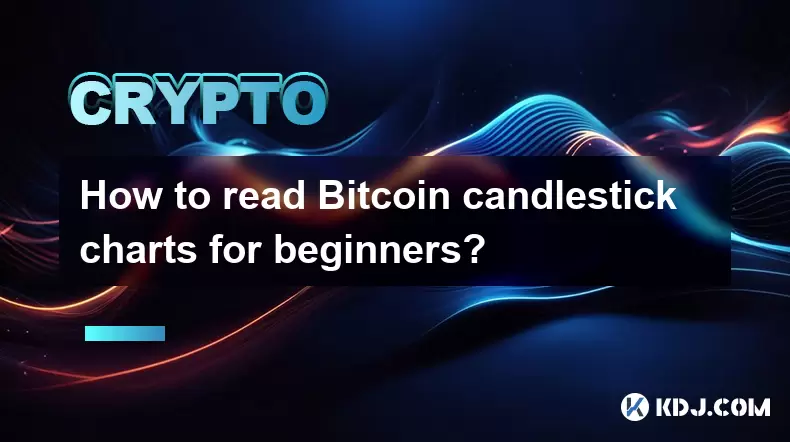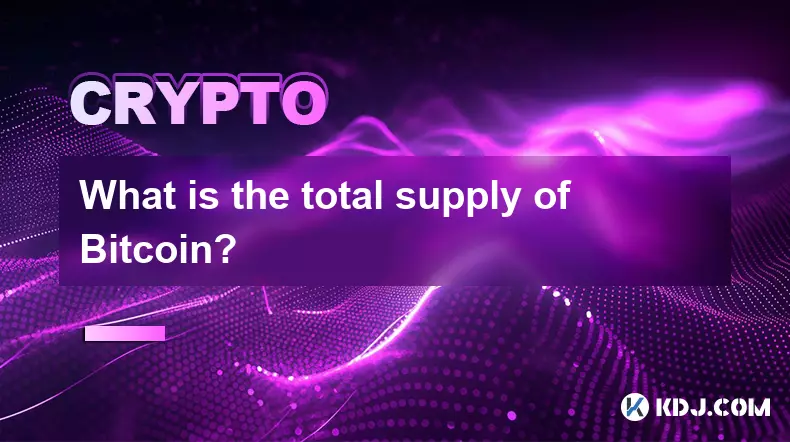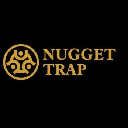-
 bitcoin
bitcoin $114684.631706 USD
-0.87% -
 ethereum
ethereum $4228.677447 USD
1.58% -
 bnb
bnb $1294.880693 USD
-1.16% -
 tether
tether $1.000819 USD
-0.02% -
 xrp
xrp $2.605138 USD
2.79% -
 solana
solana $209.908690 USD
5.89% -
 usd-coin
usd-coin $0.999903 USD
-0.03% -
 dogecoin
dogecoin $0.213423 USD
2.93% -
 tron
tron $0.322721 USD
-0.10% -
 cardano
cardano $0.727247 USD
3.66% -
 hyperliquid
hyperliquid $42.339456 USD
6.05% -
 chainlink
chainlink $19.910811 USD
5.16% -
 ethena-usde
ethena-usde $1.000557 USD
0.00% -
 stellar
stellar $0.349734 USD
2.69% -
 bitcoin-cash
bitcoin-cash $543.848687 USD
-0.21%
How to read Bitcoin candlestick charts for beginners?
Candlestick charts help traders visualize price movements and identify trends through patterns like bullish engulfing or doji, aiding in informed trading decisions.
Jul 04, 2025 at 11:22 am

Understanding the Basics of Candlestick Charts
Candlestick charts are a popular tool used in cryptocurrency trading to analyze price movements. Each candlestick represents a specific time period, such as one minute, five minutes, or even one day. For beginners, understanding how to interpret these charts is crucial for making informed trading decisions. Each candlestick has four key components: open, high, low, and close. The body of the candle shows the range between the opening and closing prices, while the wicks (or shadows) indicate the highest and lowest prices reached during that period.
If the closing price is higher than the opening price, the candlestick is typically colored green or white. Conversely, if the closing price is lower, it is usually red or black. This visual representation helps traders quickly assess market sentiment—whether buyers or sellers are in control.
Identifying Common Candlestick Patterns
Learning common candlestick patterns can help beginners anticipate future price movements. Some of the most widely recognized patterns include:
- Bullish Engulfing: A small red candle followed by a larger green candle that completely 'engulfs' the previous candle. This pattern suggests a potential reversal from a downtrend.
- Bearish Engulfing: Similar to the bullish engulfing but in reverse, indicating a possible shift from an uptrend to a downtrend.
- Hammer: A candle with a long lower wick and a small body at the top, signaling a potential bullish reversal after a decline.
- Shooting Star: Resembles a hammer but appears after an uptrend, suggesting a bearish reversal may be imminent.
- Doji: When the open and close prices are nearly equal, forming a cross-like shape. This indicates indecision in the market and often precedes a trend change.
Recognizing these patterns can provide valuable insight into short-term price behavior, especially when combined with volume analysis.
Reading Timeframes and Setting Up Your Chart
Bitcoin candlestick charts are available across various timeframes, ranging from 1-minute intervals to monthly views. Choosing the right timeframe depends on your trading strategy:
- Short-term traders often use 1-minute, 5-minute, or 15-minute charts to capture quick price movements.
- Day traders might prefer 1-hour or 4-hour charts to identify intraday trends.
- Swing traders usually rely on daily or weekly charts to track broader price swings.
To set up a Bitcoin candlestick chart:
- Select a reliable cryptocurrency exchange or charting platform like Binance, TradingView, or CoinMarketCap.
- Choose Bitcoin (BTC) as your asset.
- Select the preferred trading pair (e.g., BTC/USDT or BTC/USD).
- Set the desired timeframe using the chart settings.
- Enable candlestick display if it's not already active.
Customizing your chart with tools like moving averages or RSI (Relative Strength Index) can further enhance your analysis.
Analyzing Volume Alongside Candlesticks
Volume plays a critical role in confirming candlestick patterns and price action. High volume during a candle’s formation adds credibility to its significance. For example, a bullish engulfing pattern accompanied by above-average volume strengthens the likelihood of a trend reversal.
On most platforms, volume is displayed below the candlestick chart in the form of vertical bars. Green bars represent buying pressure, while red bars indicate selling pressure. Monitoring these alongside candlestick formations allows beginners to gauge the strength behind price moves.
Here’s how to incorporate volume analysis:
- Look for increasing volume during strong candle bodies to confirm momentum.
- Watch for decreasing volume during long wicks, which may signal weak support or resistance.
- Use volume indicators like On-Balance Volume (OBV) to get a clearer picture of buying and selling pressure over time.
Practical Tips for Beginners Using Candlestick Charts
For those just starting out, here are some practical tips to improve candlestick reading skills:
- Start with higher timeframes like the 1-hour or 4-hour chart to avoid noise and false signals.
- Practice identifying patterns on historical data before applying them in live trading.
- Combine candlestick analysis with other technical indicators like MACD or Bollinger Bands for better accuracy.
- Keep a trading journal to record observations and outcomes, helping you refine your strategy over time.
- Avoid overtrading based solely on candlestick signals; always consider the broader market context.
Consistent practice and observation will gradually build confidence in interpreting candlestick charts effectively.
Frequently Asked Questions (FAQ)
What does a long upper wick mean on a Bitcoin candlestick?A long upper wick indicates that the price rose significantly during the candle's timeframe but faced strong selling pressure, pushing it back down. This often signals rejection at a resistance level.
Can candlestick charts be used for all cryptocurrencies?Yes, candlestick charts apply to any tradable asset, including all cryptocurrencies. However, patterns may behave differently depending on the liquidity and volatility of the specific coin.
Is it safe to trade based only on candlestick patterns?Relying solely on candlestick patterns can be risky. It’s advisable to combine them with other forms of analysis like volume, trendlines, and indicators to increase the probability of successful trades.
How do I know which timeframe is best for me?Your choice of timeframe should align with your trading style. If you're new, start with 1-hour or daily charts to understand trends without being overwhelmed by rapid price fluctuations.
Disclaimer:info@kdj.com
The information provided is not trading advice. kdj.com does not assume any responsibility for any investments made based on the information provided in this article. Cryptocurrencies are highly volatile and it is highly recommended that you invest with caution after thorough research!
If you believe that the content used on this website infringes your copyright, please contact us immediately (info@kdj.com) and we will delete it promptly.
- XRP Price Prediction: Weekend Rollercoaster or Rally?
- 2025-10-12 08:45:16
- Bittensor (TAO): Super Bullish Signals Point to Potential 2x Rally
- 2025-10-11 10:25:12
- Silver Price Correction: Navigating the Dip & Identifying Key SEO Keywords
- 2025-10-11 10:25:12
- Decoding Crypto Trends: Bittensor's Bull Run, Cardano's Dip, and LivLive's Presale Buzz in 'Uptober 2025'
- 2025-10-12 08:45:16
- MoonBull: The Crypto Meme Coin Promising 1000x Gains?
- 2025-10-11 10:30:01
- Crypto Payroll Revolution: Stablecoins, Altcoins, and the Future of Salary Payments
- 2025-10-11 10:30:01
Related knowledge

What is the total supply of Bitcoin?
Oct 10,2025 at 01:55pm
Total Supply of Bitcoin1. The total supply of Bitcoin is capped at 21 million coins. This limit is hardcoded into the Bitcoin protocol and cannot be a...

Can you buy a fraction of a Bitcoin?
Oct 10,2025 at 06:01pm
Understanding Fractional Bitcoin Ownership1. Yes, you can buy a fraction of a Bitcoin. The smallest unit of Bitcoin is called a satoshi, which represe...

Why is Bitcoin considered a revolutionary technology?
Aug 12,2025 at 08:29pm
Decentralization and the Elimination of Central AuthoritiesThe core innovation behind Bitcoin lies in its decentralized architecture, which fundamenta...

Why is Bitcoin considered a revolutionary technology?
Aug 10,2025 at 07:42pm
Decentralized Architecture and Trustless TransactionsBitcoin is considered revolutionary because it introduced a decentralized architecture that opera...

What are the key features of Bitcoin?
Aug 10,2025 at 02:50am
Decentralization and Peer-to-Peer NetworkOne of the most defining characteristics of Bitcoin is its decentralized nature. Unlike traditional financial...

Can the Bitcoin protocol be changed?
Aug 07,2025 at 01:16pm
Understanding the Bitcoin ProtocolThe Bitcoin protocol is the foundational set of rules that govern how the Bitcoin network operates. It defines every...

What is the total supply of Bitcoin?
Oct 10,2025 at 01:55pm
Total Supply of Bitcoin1. The total supply of Bitcoin is capped at 21 million coins. This limit is hardcoded into the Bitcoin protocol and cannot be a...

Can you buy a fraction of a Bitcoin?
Oct 10,2025 at 06:01pm
Understanding Fractional Bitcoin Ownership1. Yes, you can buy a fraction of a Bitcoin. The smallest unit of Bitcoin is called a satoshi, which represe...

Why is Bitcoin considered a revolutionary technology?
Aug 12,2025 at 08:29pm
Decentralization and the Elimination of Central AuthoritiesThe core innovation behind Bitcoin lies in its decentralized architecture, which fundamenta...

Why is Bitcoin considered a revolutionary technology?
Aug 10,2025 at 07:42pm
Decentralized Architecture and Trustless TransactionsBitcoin is considered revolutionary because it introduced a decentralized architecture that opera...

What are the key features of Bitcoin?
Aug 10,2025 at 02:50am
Decentralization and Peer-to-Peer NetworkOne of the most defining characteristics of Bitcoin is its decentralized nature. Unlike traditional financial...

Can the Bitcoin protocol be changed?
Aug 07,2025 at 01:16pm
Understanding the Bitcoin ProtocolThe Bitcoin protocol is the foundational set of rules that govern how the Bitcoin network operates. It defines every...
See all articles










































































